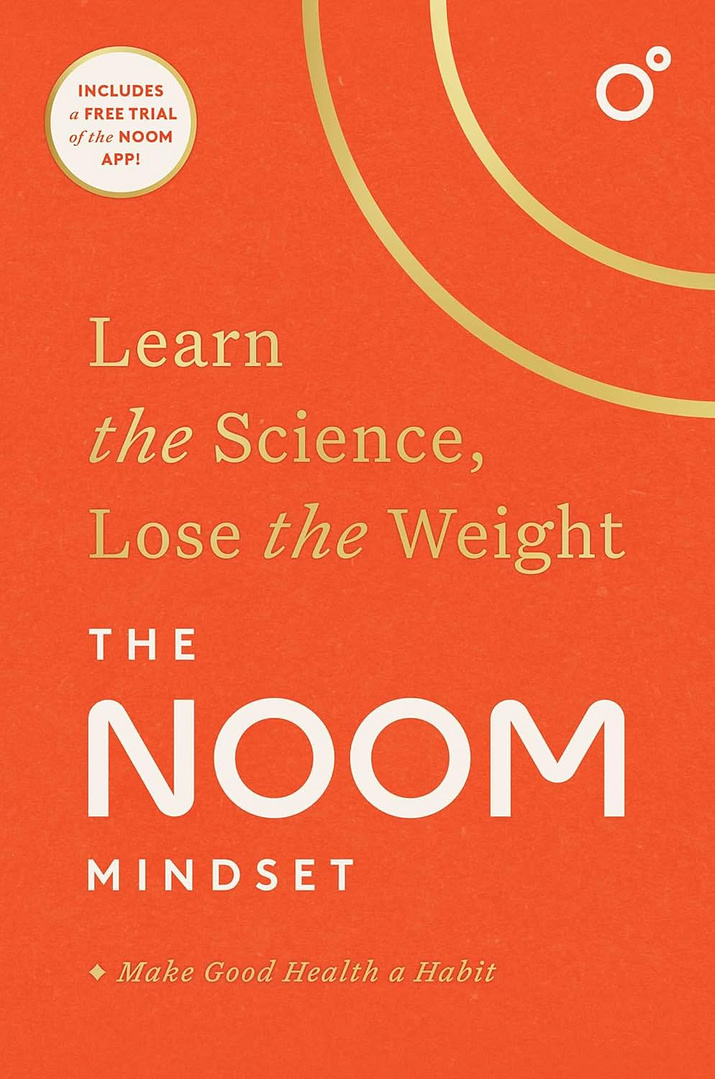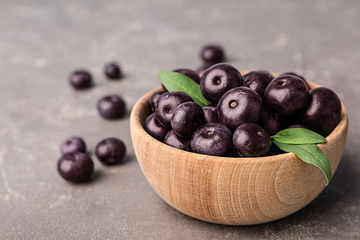There are countless programs and applications to pick from if you’re trying to lose weight.
Noom is one app that has grown in popularity, with 45 million users and counting. Despite the plan’s positive evaluations, the Noom meal lists and classifications can be perplexing. We’ve come to bring some clarity to the situation.
Noom is a diet that combines food and calorie tracking with lifestyle change tactics and is delivered via an app. It, like most diets, aids weight loss by producing a calorie deficit. Unlike other diets, the app emphasizes the mental components of weight loss, and it offers frequent thought tactics to keep users on track.
Before signing up, consider whether the Noom diet method of meal tracking is appropriate for you and your lifestyle. Here’s all you need to learn about what to eat on the Noom diet, along with a detailed Noom foods list and recipes to help you plan your grocery shopping and meal preparation.
What is Noom?
According to its website, Noom is the “final weight-loss program you’ll ever need.” It’s like having a personal trainer, dietitian, and health expert in one good place.
Noom is unique in that it focuses on behavioral changes related to diets and weight loss. The app’s educational features, such as how it informs you about calorie restriction and carb intake and how to enhance physical activity, are pretty helpful if you want to lose weight in a long-term manner.
You can also get prizes for changing your habits, in addition to social support—and both positive thinking and accountable coaching have been proven to aid long-term success.
What the Noom App Has to Offer
Noom is structured so that you have many different programs to choose from, and it’s critical that you grasp what they are before making a decision.
Noom’s Healthy Weight Program
Noom’s Healthy Weight Program is a complete wellness program that includes food, exercise, and mental health. The goal is to alter your habits so that you not only lose weight but also keep it off in the long run.
The app provides feedback on your food options to assist you in eating better and meeting your goals. To start, you must install the app and input your height, weight, gender, age, general health information, goal weight, social circles, and other personal information. Then you keep track of your meals and snacks daily.
You also keep track of your workouts. To track your steps, the app contains a built-in pedometer. Noom provides fitness suggestions to help you get more active.
Through Noom’s messaging tool, you’ll receive regular feedback from a personal coach. The coach’s job is to keep you motivated toward your objective and to assist you in overcoming any hurdles that arise along the way. A virtual support group can also help you connect with other members.
Noom promises to educate you on how to make better dietary choices throughout the 16-week program. Every day, you’ll receive articles on nutrition, weight loss, fitness, and interactive challenges to keep you motivated. The curriculum also includes tips for preventing and managing chronic conditions such as high blood pressure and diabetes.
Diabetes Prevention Program
Noom is an expert in diabetes management. It works in conjunction with iHealth Gluco-Smart to record your daily blood glucose levels. You can also manually enter them. Noom can also help you keep track of your blood pressure.
Noom focuses on helping individuals make essential lifestyle changes for diabetes management by employing a “universally healthy diet.” It also includes instructional materials for explaining the importance of a healthy diet and how it contributes to the long-term effects of diabetes control. The CDC has designated Noom as the first virtual program as a Diabetes Prevention Program (DPP).
Daily curriculum
Noom offers daily lessons to help you recognize your food mindset and, if necessary, change it to lose weight. A professional team with backgrounds in psychology, diet, exercise science, and medicine devised these lectures. The lectures are focused on behavioral psychology and are presented in a straightforward, easy-to-understand manner.
The daily curriculum is centered on modifying your behavior and provides Noom an advantage. The program focuses on the science of weight loss and the premise that changing your mindset about food is critical. Noom strives to make the process more pleasurable, as evidenced by the daily curriculum.
How Does Noom Work?
Before using the Noom app, you must first answer a few questions about your weight and how much weight you intend to lose. The algorithm will calculate your weight loss target and a weekly plan for achieving it.
The software even gives you access to a “health coach” who can answer specific queries like what to order at a restaurant for dinner or how to prepare a healthy takeaway. This is useful for when you’re stuck and will help you stay on track.
Is the Noom Diet Plan Effective in Terms of Weight Loss?
Yes, the Noom diet makes tracking calories and what you eat exceedingly simple, fantastic for weight loss. You only need to spend about 10 minutes per day filling in your progress on the app. If you’ve forgotten to include something, your health coach will provide you with reminders to keep you on track.
If you’re attempting to lose weight, creating a food diary can be beneficial. Monitoring what you’re regularly eating can help you recognize good and bad eating patterns and make you more aware of how many calories you’re consuming. You may be less likely to nibble on high-calorie meals because you’ll be aware that you’ll have to track them, so you’ll pick healthier alternatives instead.
And according to the #NoomNerds hashtag on social sites, the results have been astounding, with research claiming that nearly 80 percent of 36,000 Noom users have lost weight.
What Can You Eat on the Noom Diet?
The Noom app, like other famous paid weight loss programs, asks you to log your meals to help you lose weight. It calculates the caloric value of each item you enter, compares it to the amount of exercise and other physical actions you’ve done during the day, and weighs both of these aspects against your own goals. Noom’s goal is to keep your body nourished with enough calories, but it doesn’t prevent you from consuming certain substances or food groups.
What Do the Food Colors on Noom Mean?
Noom doesn’t force you to follow a particular diet, but it does use a color-coding system to reward you for eating healthy, nutrient-dense meals. Even if you do eat a less nutritionally dense meal, the app will aim to help you limit caloric backlash by advocating portion restriction for red-colored ingredients. It may also reward you for eating green-coded foods while anticipating that you would eat a lot of yellow-coded foods in most of your meals.
Its color system is intended to serve as general guidance for new Noom dieters and an updated approach to calorie targeting. Users are recommended to get roughly 45 percent of their calories from the program’s yellow category, up to 30 percent from the green area, and a lesser 25 percent from the red group.
It’s crucial to remember that red meals aren’t necessarily “bad” and that green vegetables can be unhealthy in large quantities. If you’re having trouble deciding what to buy or eat, Noom’s color-coded list may be able to assist you in making the best option possible on the spur of the moment.
Noom’s Green Foods List:
These foods are the least calorie-dense but contain the most nutrients. Noom recommends that this make up the majority of your diet and that you eat more significant portions of it.
What you should double down on:
- Non-Fat Dairy like Greek yogurt, cottage cheese, cheese, milk, sour cream
- Hearty Vegetables such as sweet potatoes, spinach, carrots, broccoli, cucumbers, lettuce, mushrooms, bell peppers, asparagus, green beans, onions, peas, and Brussel sprouts.
- Healthy Fruits: Apples, strawberries, oranges, blueberries, apples, bananas, tomatoes, watermelon, grapes, raspberries, pineapple, pears, cherries, peaches, mango, figs.
- Whole Grains: Wheat bread, whole grain pasta, pita, and rice; quinoa, grits, brown rice, and barley, among others.
- Protein Source: Egg whites, shrimp, lean white fish, mahi-mahi, lobster, tofu
- Condiments: Salsa, apple cider vinegar, sauerkraut, citrus juice, tomato sauce.
The best things to eat on the Noom diet are vivid colors. Fresh veggies, healthy fruits, complete grains and boosted dairy foods all work together to keep your digestive system in check. You’ll discover that you can eat more of these nutritional powerhouses throughout the day, and the more you include in your meals, the closer you’ll go to your daily, weekly, and monthly weight reduction objectives.
Noom’s Yellow Foods List
These foods are higher in calories and lower in nutrients than “green” foods. Moderate quantities should be consumed. What you should eat in moderation:
- Good Sources of Lean Protein: Steak, fish, turkey, chicken breast, pork, lamb, canned tuna, sushi
- Fruits: Olives, dried apricots, prunes, canned pineapples, avocado, plantain
- Dairy: Low-fat yogurt, 2% low-fat milk, low-fat cottage cheese, low-fat cheese
- Snacks: Hummus, fruit cup, banana pancake, rice pudding, acai bowl
- Beverages: Diet sodas, ginger beer, vodka soda, grapefruit juice, light beer, orange juice, fruit smoothie, unsweetened cranberry juice
- Legumes: Lentils, edamame, baked and refried beans, tempeh, chickpeas
- Condiments: Gravy, oyster sauce, cacao powder, balsamic vinegar, mustard, soy sauce, pizza sauce
Although the app advises you to consume fewer yellow-coded items, you may find that certain ingredients are healthful in and of themselves. Only because they have a higher calorie density than foods on the green list, Noom has classified these items as second-tier. However, this does not imply you should altogether avoid them; the app encourages you to include lean proteins and other nutrient-dense foods like tempeh in your meals, although in lesser amounts.
If you find yourself regularly reaching for products on the yellow list, Noom’s app can help you identify a green-list item that you can simply switch for. For example, you could occasionally substitute tofu for chicken breast in dinner because Noom prefers tofu over chicken breast.
Noom’s Red Foods List
Foods that are high in calories but low in nutrients and processed foods are classified as red foods. These should be consumed in smaller portions and less frequently. What you should keep in mind:
- Dried Fruits: Dates, raisins, dried cranberries
- Grain Snacks: White bread, biscuits, pita bread, hot dog buns, flour tortillas, croissants, bagels, granola, saltines, waffles, muffins
- Dairy: Butter, margarine, full-fat cheese, whole milk, half and half, cream cheese, cottage cheese, full-fat yogurt
- Condiments: Olive oil, ranch dressing, sour cream, mayonnaise, ketchup, barbecue sauce, pesto, coconut milk, maple syrup, honey.
- Savory Snacks: Nuts, tortilla chips, potato chips, crackers, popcorn, pretzels
- Desserts: Sugar, dark chocolate, ice cream, cookies, cake, brownies, apple pie, candy, cheesecake, whipped cream
- Beverages: Red wine, white wine, champagne, coffee creamers, hot chocolate, vodka, margarita, apple cider, mixed coffee drinks
As you might expect, items heavy in calories, saturated fats, sodium, sugar, and processed carbs are included on Noom’s red list. While you’re not forbidden from eating certain foods now and then, they must be strictly avoided daily.
If you like more than a tiny share of meals on Noom’s red list, you may want to double up on items on the app’s green list for the rest of the day, or invest a little more time in the gym, to keep on track with any weight loss goals.
Benefits Of The Noom Diet
The Noom weight-loss software emphasizes a long-term strategy for weight loss. It has many advantages.
Calories are the Main Focus.
Calorie restriction is one of the most effective ways to lose weight. A low-carbohydrate, low-calorie, and low-fat diet (combined with a low glycemic index) aids weight loss and maintenance. The calorie density of various foods is highlighted in the Noom app.
The majority of fruits and vegetables are high in fiber and low in calories. As a result, they can aid in weight loss. They also have a low glycemic index and help you feel full.
Allows for More Food Intake Flexibility
Many regimens attempt to help you lose weight by restricting food intake. The Noom diet, on the other hand, adopts the opposite strategy. It gives you absolute freedom in selecting foods from the green, yellow, and red food groups, emphasizing portion control.
The items in the red category are high in energy. However, they are not excluded from the Noom diet regimen. A diet plan that excludes desserts and sweets can get monotonous. As a result, the Noom diet plan allows you to eat them in tiny amounts to fulfill your sweet taste. Following Noom’s recipes will also offer your nutritious dishes a unique twist.
Encourages Changes in Behavior
Weight loss is aided by suitable behavioral modification. A behavioral change was found to be more effective than weight-loss drugs in randomized clinical trials, including 122 people. Information on the long-term impacts
The Noom diet plan is a lifestyle management and behavioral modification strategy that guarantees 1-to-1 motivational and cognitive adjustments. The Noom coach, support groups, and psychology-based curriculum all play a role in these transformations. They maintain a steady stream of motivational blogs that assist readers in staying on track and healthily losing weight.
Dedicated Coaches are Available
A committed coach always results in significant improvements in an individual’s behavior and lifestyle patterns. According to a study published in the Journal of Medical Internet Research, including coaches in a weight loss program enhanced user engagement and resulted in a lower BMI (Body Mass Index).
The Noom app has an interactive experience that includes coach-participant chat, messaging, and daily missions to help people improve their habits for long-term health and weight loss.
The Noom diet plan provides many advantages. It’s Incredibly successful due to its innovative features. It’s also very effective due to its features. However, like any other diet plan, it has drawbacks.
The Noom Diet’s Potential Drawbacks
Noom is a fantastic platform and all-in-one tool for effectively achieving health goals. However, there are a few drawbacks that must be considered.
- The calorie counter is the only feature of the app. There are no macro- or micronutrients mentioned. Studies demonstrate that diets rich in high-quality micronutrients help people lose weight long-term.
- The Noom program may be out of budget for some. It offers a free trial period and then charges $49 a month.
- Anyone who is not tech-savvy or hesitant to utilize a health app should avoid the platform.
- The inaccuracies that show up if you regularly neglect to log your food consumption, activity, weight, and biometric markers can be demotivating and possibly derail your weight reduction quest.
- Noom provides a virtual coaching system, with all contact taking place in built-in messengers. This could cause a delay in the analysis of clinical situations.
- No face-to-face coaching: If you prefer one-on-one tutoring, Noom may not be the best solution. You won’t get in-person or video counseling; everything, including communication with your health coach, will be done through the chat service.
Is There a Meal Plan Available From Noom?
There are no meal plans to follow on the Noom diet from day to day. It does, however, feature a large number of recipe ideas to choose from, which can be helpful when creating your weekly meal plans based on the foods you should be eating.
The benefit is that you have complete discretion in terms of meal preparation as long as you stick to your calorie budget.
Is Noom Safe?
Noom is reasonably safe compared to severely restricted or imbalanced diets, such as juice cleanses or diets low in carbs, because it still allows for a range of meals.
Noom claims that users can expect to lose one to two pounds per week by following the regimen. This may be healthful and safe in many circumstances, but context is crucial. Even one to two pounds every week over several weeks may be dangerous unless you’re already at a stable and healthy weight for your body.
It’s critical to remember that you should always speak with your doctor before beginning any new diet.
Final Words
Noom comes in useful if you’re used to using apps. Everything is on your phone.
Noom is a method that is based on a person’s lifestyle. It assists you in determining what has been preventing you from losing weight in the past so that you may make lasting adjustments. So this isn’t about losing weight for a special occasion and then returning to “normal.”
Noom aspires to make you a better eater in general. Whether you use an app, a paper-and-pen journal, or a real-life support group, it takes effort. Of course, you must be responsible. You won’t receive results if you lie to the app about what you ate or how much you exercised.
The personal coach can assist you in staying on track. However, if having someone contact you every day irritates you, this approach may not be for you.
Noom doesn’t make shopping and cooking easier. It provides recommendations for foods to eat and recipes. This improves your ability to make wiser judgments.
To take advantage of this offer, you’ll need to spend some money. And the concept isn’t brand new. But, if the app can help you learn to eat healthier and maintain those improvements over time, the fee may be worthwhile.
Recommended Noom Diet Books
Jason Hughes
Jason Hughes

Clear Protein Drinks: Optimal Hydration and Muscle Support for Athletes and Fitness Enthusiasts
Read More »- Why is My Poop Black: Uncovering the Causes and Solutions - December 21, 2023
- Clear Protein Drinks: Optimal Hydration and Muscle Support for Athletes and Fitness Enthusiasts - December 21, 2023
- Does Apple Juice Make You Poop: Uncovering the Digestive Effects - November 29, 2023







